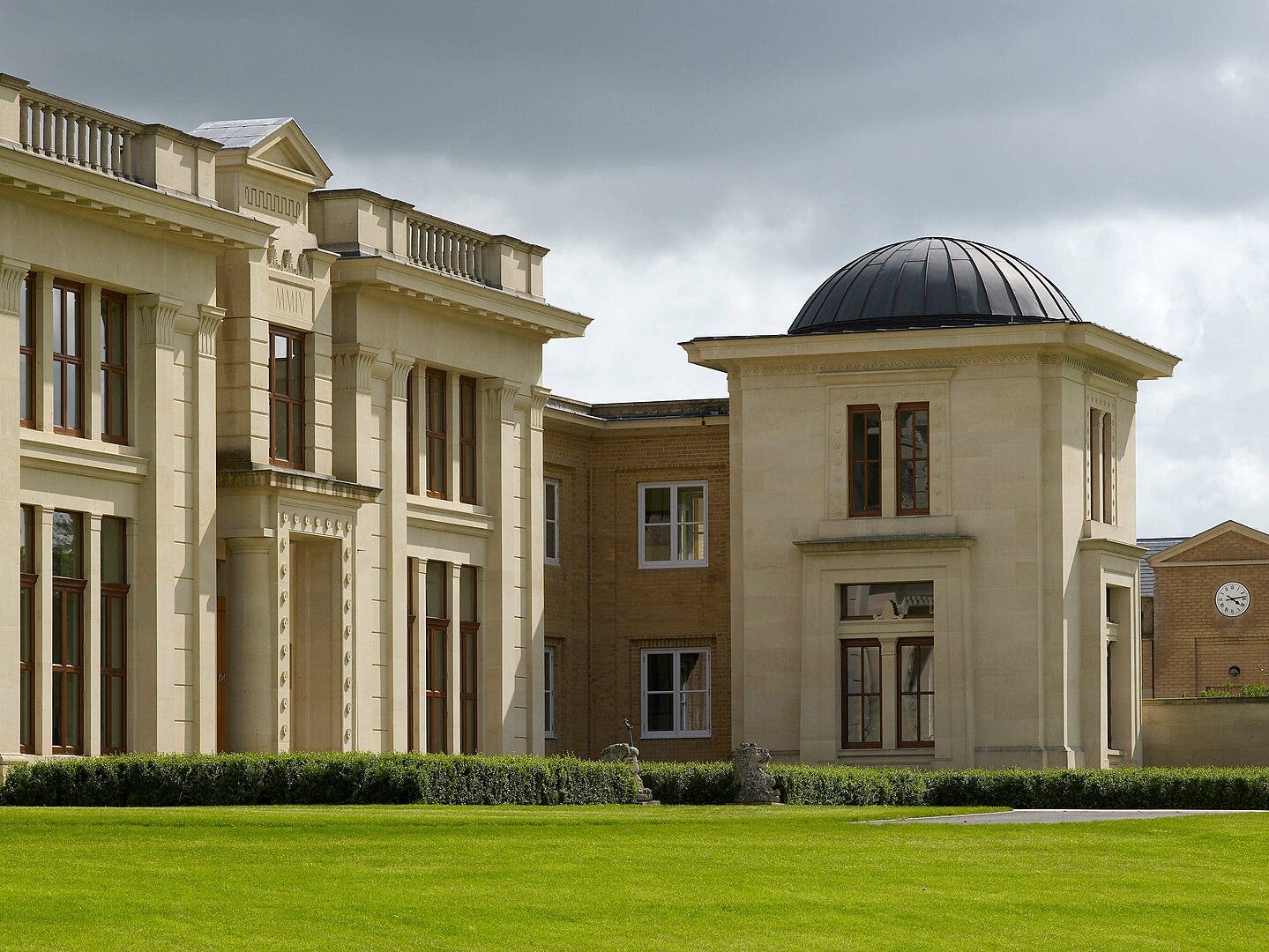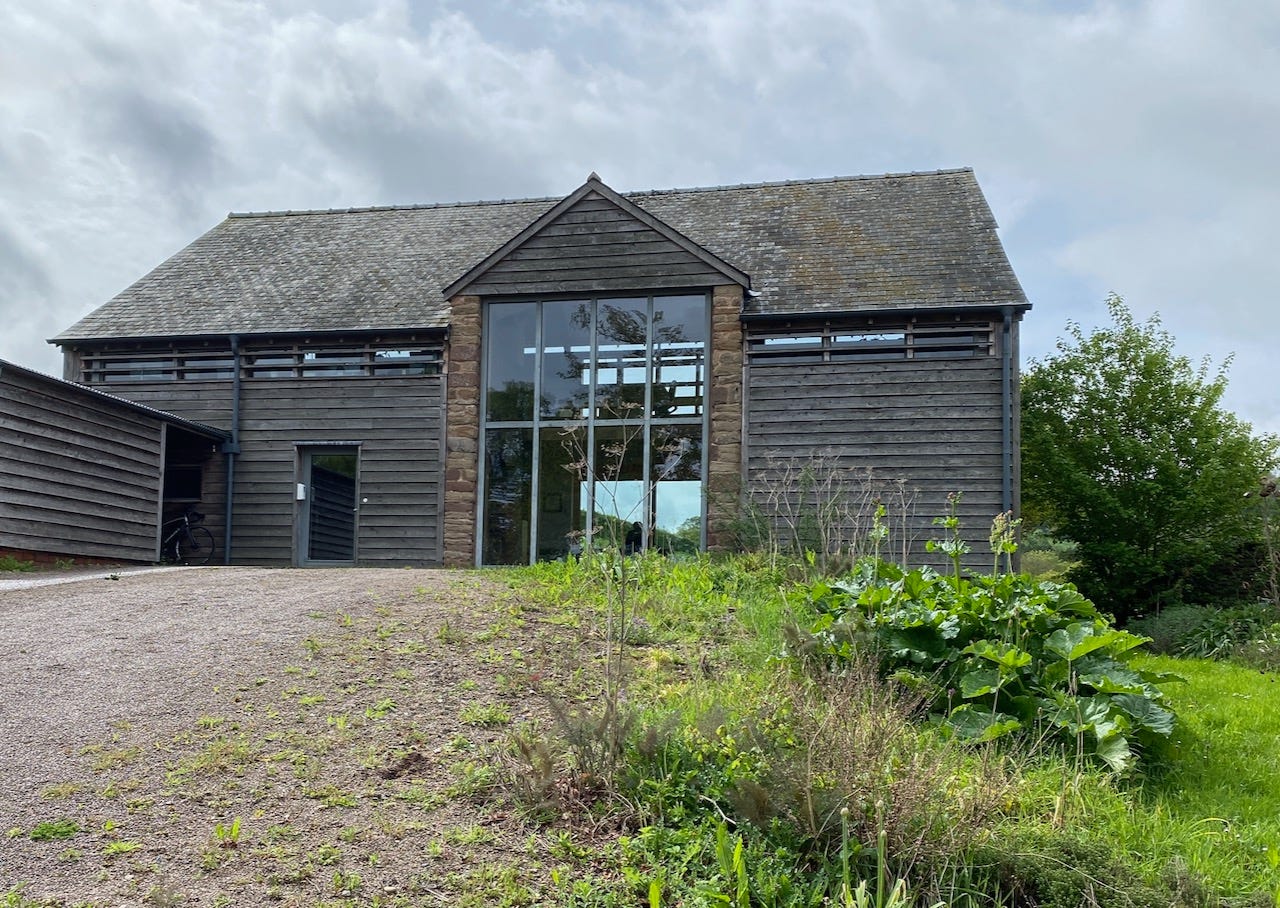Can architects and designers make a difference in the climate emergency?
One prominent English architect says we should just shut up and draw, we don't matter much anyway.

I am single-minded when teaching sustainable design at Toronto Metropolitan University: it is all about carbon, carbon, carbon, the issue of our time. My students are urban, interior, and fashion designers in The Creative School at TMU; architects are across the street. I am probably a bit repetitive, but I want my students to know they have the knowledge and understanding to guide their clients to make low-carbon, low-impact choices. It is their role and their responsibility.
Robert Adam is a living architect (there is also a famous dead one with the same name) practicing in the UK, describing himself as the "leading classical and traditional architect, urban designer, designer, author, educator and activist." He is also a polemicist, writing in the UK architecture magazine Building Design that Architects won't save the planet, noting that "the belief that architecture can save the world from environmental disaster is just a grandiose delusion."
Adam uses many of the standard clichés that one often hears from climate arsonists- "our share of emissions is tiny" then slices and dices the built environment to make the architect's role even tinier:
"That 40% of UK carbon emissions comes from buildings is trotted out again and again. True. But then most daily activity takes place in buildings. Construction is around 10%. How much can architects control even that?" His 10% figure is 20 years out of date; I believe he is talking about upfront emissions vs operating emissions, where of course the work of the architect and engineers affects and controls.
He further downplays the architect's role: "And how much difference will we really make? The UK represents around 1% of carbon emissions globally. So, UK construction is 0.1%. The architectural contribution? Hard to calculate but much less."
He doesn't think much of anyone involved in the issue:
"Being socially conscious and responsible is a good thing. But getting whipped up by joining the hyperbolic extremists doesn't help."
Now I would not usually bother to waste any pixels on a cranky old trad who builds mansions for plutocrats. However, I was surprised by all the supportive comments like "utterly brilliant piece and about time someone said this and called out this scaremongering nonsense," and my favourite: "Feeding those delusions that architects have the ethical duty to protect the planet and the public above the interests of their clients and their profession is simply put catastrophic." I had no idea there were so many public cranks in the profession. (later commenters balanced these out.) But I just returned from a visit to the UK where I met architects who are changing the way we design, the materials we use, who are driving down the upfront and operating carbon emissions of what they build. They prove that what the architect does is important and amounts to more than a hill of beans in this crazy world.
There’s Andrew Waugh with his wonderful wood, and Architype, who I visited in Hereford. They were all punching way above Robert Adam’s Little Britain. I wondered on Linkedin if I was over-reacting to Adam, and Christian Dimbleby of Architype didn’t think so.
“In my latest Architype blog post I calculated that our #passivhaus designs have saved 78% of operations emissions (still working out the embodied carbon too, but probably another significant impact) saving conservatively 6,750 Tonnes of CO2e over the last 10 years from just a small number of projects. Multiply that by all architects & projects and you can see those little design decisions that we do have control over can make a big difference. Architects set the vision of the built environment and we must use that power and responsibility wisely.”
And as for the architect’s role? Passivhaus architect Bronwyn Barry noted that “Passivhaus is a team sport” and the same is true for most buildings- it takes a number of professionals working together. The question here is, what is the goal? Sustainability or ostentation?
I had breakfast with architect Kelly Alvarez Doran and engineer Will Arnold in London and they both chipped in to Linkedin, with Alvarez Doran noting:
“Curious to know what Robert Adam is teaching up at University of Strathclyde these days. If this is his message I can't imagine he's attracting many students. My advice to architects and students is the complete opposite of Mr Adams. By tackling LCAs and whole life carbon architects stand to gain greater agency through collaboration with our fellow AEC professionals.”
Will Arnold started a whole thread of his own on this noting:
“It continually surprises and disappoints me to see so-called "professionals" touting such nonsense as this. "Refusing to do our work because we want to change society won’t change it" sounds an awful lot an argument against acting ethically.
And "buildings are commissioned by clients with budgets. If super-sustainability doesn’t sell or stack up, it won’t be done" is frankly just wrong - lower carbon can be cheaper, better, and more comfortable.Agree that we need wider systematic change if humanity is really going to save itself, but we won't see this without grassroots change, and that will only happen if design professionals stand up for what is ethical, and do what they can to make each project as sustainable as possible.”
Will also mentioned teaching: “I doubt that what Robert Adam is teaching is at all aligned with University of Strathclyde's own view on the climate emergency, and the 1300 signatories to UK Architects Declare probably disagree too, I reckon.”
I should point out that Robert Adam is a talented architect, if you are into trad, and that universities should be open to different voices and ideas. But I hope he is sticking to the Classical Orders and not telling his students that their place in the built environment is insignificant and that they are just drafters and stenographers for the ruling class, or that everyone who tries to do anything about the climate emergency is a hyperbolic extremist.
I am going back to school in September and telling my students that their role is significant, the climate emergency is real and in our face (anyone in eastern North America is breathing it right now) and their job, if design jobs still exist, will be to help fix it. I will describe my new book, which is all about using less stuff and not locking in massive carbon emissions. I could go on and on here, but I just saw Robert Adam’s Gallery Page and realize that I shouldn’t have bothered wasting these pixels, I am just pissing into the wind.






"And as for the architect’s role? . . . The question here is, what is the goal? Sustainability or ostentation?"
Actually, it's not about ostentation, it's about an aesthetic that people want to live and work in. I did a Google search for Passivhaus designed homes this morning and after browsing literally hundreds of examples they all became a blur of the same prevailing aesthetic: boxy, modern, and surprisingly, something that can best be described as 'monochromatic' using the same materials, colors, and design. Most Passivhaus examples via Google were either stand-alone isolated SFDH (single family detached home) or more rarely, conjoined SFH's in their own new subdivision. For the person who LIKES that aesthetic, that's fine—Passivhaus is an easy sell. It's considerably more difficult to sell an average Joe Homeowner on it, especially if new construction is going into small infill lots.
I think overall it's going to be difficult for home purchasers to warm up to and adopt Passivhaus designs regardless of upfront carbon costs and lifetime operating carbon costs. In the UK, just 233,000 new homes were supplied in 2021/22, according to the UK Parliament—and according to the UK Office for National Statistics there's 26.4 million homes throughout England and Wales. In other words, new construction is just 1% of total stock, and as I've pointed out so many, many times before on TreeHugger, the 800 pound gorilla in the room is dealing with the carbon use in EXISTING inventory, not new. It's why I've said weatherizing existing homes to be more energy efficient is going to be far better at moving the needle on residential and commercial energy consumption than trying to turn it all into Passivhaus standards. I also recognize Lloyd's preoccupation with architectural design on new construction fitting into the upfront carbon cost/Passivhaus world paradigm because that's literally his job—but stepping back to look at the situation from an elevation of 40,000 feet paints a much different picture.
tl;dr ... Passivhaus won't save us unless exterior aesthetic can be more diverse to appeal to more people and retrofitting current housing stock can make financial sense on carbon saved.